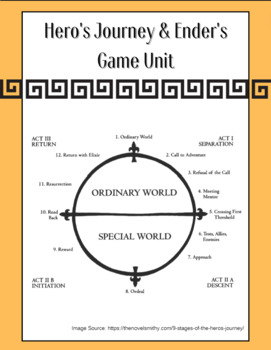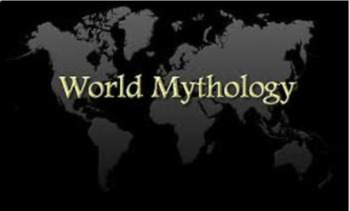Hero's Journey/Ender's Game/World Mythology Bundle
- Zip
What educators are saying
Products in this Bundle (2)
Description
Bundle of the World Mythology Unit and The Hero's Journey/Ender's Game Unit.
World Mythology Description:
A complete three to four week unit on mythology from around the world.
Includes Mythologies from 8 different cultures, worksheets, myth packets, creatures from different mythologies, a project, and a jigsaw activity.
The myth unit covers creation myths in the 1. General Asian Mythology 2. Celtic Mythology 3. Egyptian Mythology 4. Greek/Roman Mythology 5. Islander Mythology 6. Native American Mythology and 7. Norse Mythology. In addition to Local Myths from my area. You will need to do your own research for your area/locale.
Asian Myth: China: 1. The Goddess of the Moon & The Monk that Endured. Japan: The Adventures of Little Peachling & The Mirror of Matsuyama
Celtic Myth: Dagda's Harp, The children of Lir, Finn's chief Men, and Connla and the Fairy Maiden
Egyptian Myth: Isis & Osiris, The Revenge of Horus, The Land of the Dead, and Isis and the seven scorpions.
Greek/Roman Myth: Romulus and Remus, Orpheus and Eurydice, The myth of Icarus and Daedalus, and The Twelve Labors of Hercules.
Islander Myth: Pele and Hi 'iaka (Hawaii), TheStory of Pili and Sina (Samoa), Maui and the Giant Fish (Maori), and Hudhud Hi Aliayon (Phillippines)
Native American Myth: White Buffalo Woman (Lakota/Sioux), Coyote's Rabbit Chase (Tewa), Porcupine Hunts Buffalo (Ute), and Wolf Boy (Kiowa)
Norse Myth: The Mead of Poetry, Loki and the Dwarves, Why Odin is One-Eyed, and Ragnarok: The Doom of the Gods.
And then I included 4 local myths from my area.
Hero's Journey/ Ender's Game Description:
Once you purchase the unit, you will receive the entire PDF. In the Important Links page, you will find the Google Folder link. Navigate to that link and make a copy of the file. This will allow you to make edits on the files.
Introduction to the Hero's Journey cycle Materials
CommonLit article on Hero's Journey
Myth of Perseus (Greek)
Myth of The Lost Sun, Moon, and Stars (Hawaiian)
The Myth of The Three Tests (East African- Swahili)
Worksheets for each myth (answer keys included)
Disney's Hercules movie worksheet
Ender's Game Novel Study
Reading Questions for each chapter**
Plot Chart worksheet for novel
Tracking Ender's Hero's Journey worksheet
Movie & Novel comparison worksheet
Argumentative Essay Prompt
Optional Create Your Own Hero project
Suggested Pacing Calendar
Final Exam with Answer Key
**Please note that students answers may vary, therefore I have NOT included an answer key.



